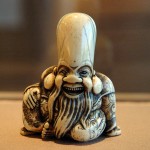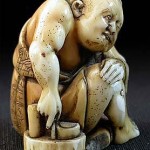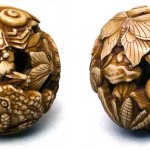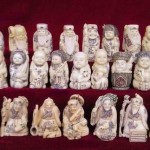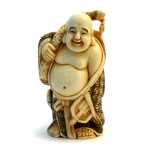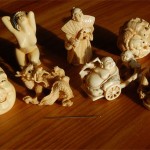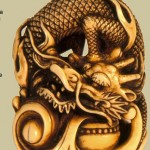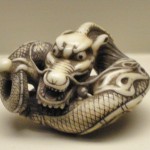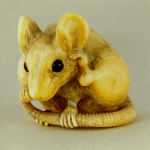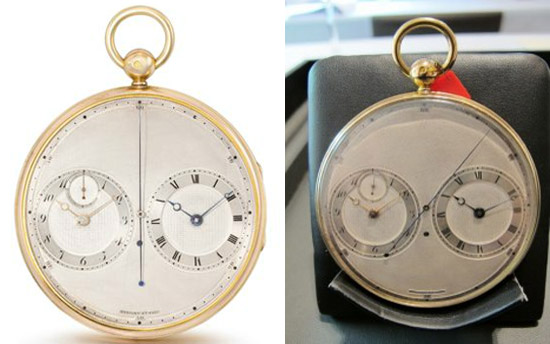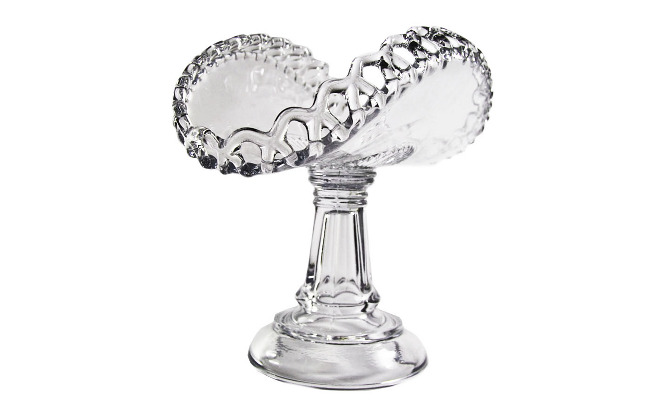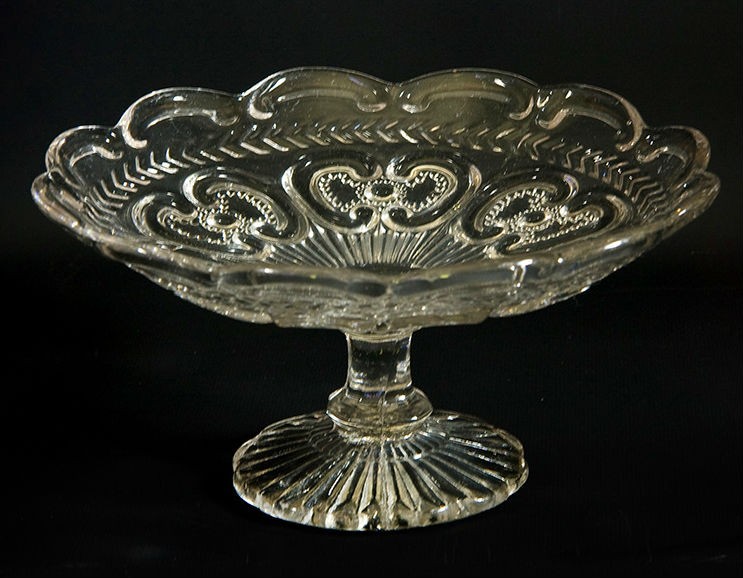Contrary to popular belief most of the great collections are outside of Japan. The Europeans were the first to collect netsuke, which were exported from Japan in great number during the second half of the 19th century. With the Meiji restoration in 1868, western dress was adopted in Japan and netsuke lost its appeal. Very large collections were built in England, France, and the United States. Today, many of the best collections are still in Europe and the United States either in private hands or museums.
There are many different designs with the most common being the katabori or figural netsuke. There are also sashi or long, thin netsuke, that were thrust through the belt, with the sagemono suspended from the end that protrudes below the obi. Manju netsuke are named after a popular bean paste confection that came in a round, flat shape. Kagamibuta (literally, “mirror lid”) are a special type of netsuke with a metal lid and a bowl, usually in wood or ivory. Finally, there are mask netsuke, which are miniature versions of the masks used in Noh and Kyogen plays.
Quite often they are not signed. In fact, the netsuke considered by many experts to be the greatest of all is unsigned. It is an 18th century ivory netsuke depicting an Ama (Japanese diving girl) and a squid. Some collectors prefer unsigned works.
It is important to be aware of fakes of which there are different types. There are crude modern copies, referred to as “Hong Kong” netsuke, either in ivory or plastic, that are usually sold for a few hundred dollars in souvenir shops. There are also good modern copies of 18th and 19th century works, meant to defraud and sold for thousands of dollars.
There are 19th century copies of earlier works that were carved by the Japanese to meet the demand from European collectors. These are excellent works of art but the difference in value between these copies and the original items can be a factor of ten. Almost all fakes are in ivory, not other materials, since ivory can be carved much more easily and faster.



